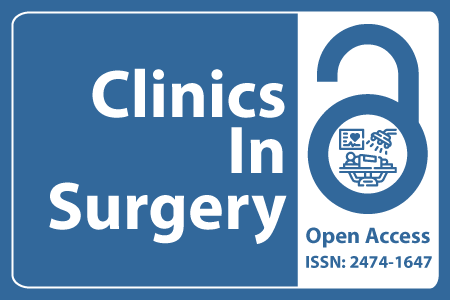
Journal Basic Info
- Impact Factor: 1.995**
- H-Index: 8
- ISSN: 2474-1647
- DOI: 10.25107/2474-1647
Major Scope
- Colon and Rectal Surgery
- Otolaryngology - Head and Neck Surgery
- Ophthalmic Surgery
- Thoracic Surgery
- Emergency Surgery
- Gastroenterological Surgery
- Breast Surgery
- Plastic Surgery
Abstract
Citation: Clin Surg. 2021;6(1):3058.Research Article | Open Access
Review of the Latest Methods in the Treatment of Epidermolysis Bullosa and Other Chronic Wounds, Development of Innovative Advanced Therapy Medicinal Product
Nita M1 , Pliszczyoski J2 , Kowalewski C1 , Kosieradzki M1 and Fiedor P1*
1 Department of General and Transplant Surgery, Medical University of Warsaw, Poland 2 Department of Dermatology, Medical University of Warsaw, Poland
PDF Full Text DOI: 10.25107/2474-1647.3058
Abstract
Epidermolisis Bullossa (EB) is classified as genodermatosis, a hereditary genetic skin disorder that causes severe, chronic skin blisters with painful and life-threatening complications. Currently, there is no effective therapy or cure for EB. Over the past decade, however, a number of important advances have been made that bring the clinic closer to new methods of treatment, including gene therapy, protein replacement therapy, cell therapy (allogeneic fibroblasts, Mesenchymal Stromal Cells (MSCs), bone marrow stem cells transplant, culture/vaccination of revertant mosaic keratinocytes, gene editing/engineering and the clinical application of inducible pluripotent stem cells. Tissue engineering scientists are still trying to develop structures that mimic the structure and natural healing process to promote skin reconstruction in the event of incurable injuries. Although the cure for EB remains elusive, recent animal model data and preliminary human clinical trials have raised the expectations of patients, clinicians and researchers whereby modifying the disease and improving life quality are attainable goals. In addition, the lessons learned from the treatment of EB may have a significant impact on improving the treatment of other genetic diseases.
Keywords
Biological dressing; Human skin allograft; Allogenic human skin equivalent; Epidermolysis Bullosa
Cite the article
Nita M, Pliszczyoski J, Kowalewski C, Kosieradzki M, Fiedor P. Review of the Latest Methods in the Treatment of Epidermolysis Bullosa and Other Chronic Wounds, Development of Innovative Advanced Therapy Medicinal Product. Clin Surg. 2021; 6: 3058..













